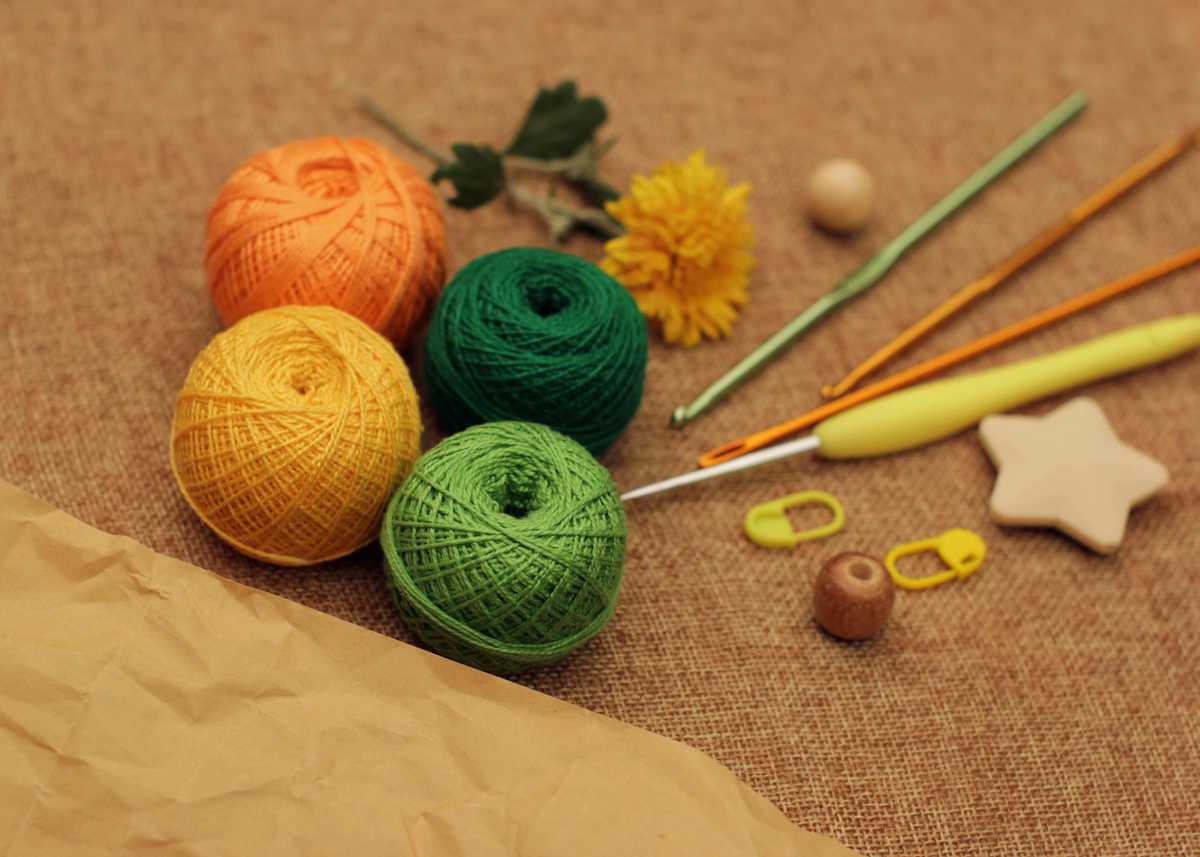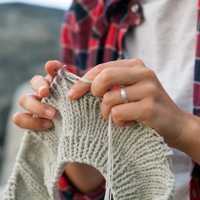Understanding Crochet Instructions And Materials

Understanding Crochet Instructions And Materials
By Mei Ling
Understanding Crochet Instructions And Materials
By Mei Ling
In today's world, it seems that almost any topic is open for debate. While I was gathering facts for this article, I was quite surprised to find some of the issues I thought were settled are actually still being openly discussed.
Some peoples asked how to go about understanding Crochet instructions. You may find the following information helpful.
Crochet instructions are actually not that difficult to follow and read once the pattern and understanding the meaning of each abbreviated symbol become familiar to you.
Remember to search in the instruction the punctuation and the pause each time you see periods or commas. The basic element in studying crochet patterns and instruction is understanding the style of writing, that includes crochet abbreviations. However, it is not important to learn by heart the symbols and abbreviations immediately because you can always refer to your list when needed.
Having somebody at your side to read the directions out loud to you can be very helpful. Although it is not important to memorize abbreviation, it is significant to understand it, so that you will know what to do.
Directions generally make use of parentheses ( ) and asterisks (*) to show pattern repetitions.
For instance, when the pattern instructs you to “repeat from ” you need to examine and look back at the instruction of the row that you currently are working on and then locate the asterisk (). Crochet the instruction instantly following that asterisk (*).
There are times when a certain pattern ask to “repeat from ” not just one time, but more. If this is the instruction, you need to go back, locate the asterisk () and then crochet the instructions following it, for how many times the pattern requires.
Generally only one asterisk (*) in a row is found and the “repeats” will bring you to the row ending so that there is no supplementary instruction required for where you should end the repeats.
There are a few patterns that uses a “single asterisk ()”at the start and at the end of “the repeat”. So that when you arrive to the succeeding “single asterisk (), you are aware that it is the spot where that “repeat” will be stopped.
At certain times patterns uses “single asterisk () and a “double asterisk (), where the “double asterisk ()” is normally used to indicate where you need to end the repeat; for instance, a pattern instructs you to “repeat from * to **”. You need to search for, going backwards in the instructions of the round which you are working on and locate the asterisk (). Then you need to crochet the instructions at once succeeding that asterisk (*) and then continue till such time you arrive to the double asterisk (**), then you need to stop and begin to crochet once more at the course where you stop or left off before making the repeat.
Directions normally state "work even", meaning that you should be working on the same stitch and not decreasing or increasing any stitches.
Here are things to keep in mind when looking at a crochet pattern:
-
Crochet patterns and instructions are worked usually in rounds or rows. Every crochet pattern will spell out if you are doing or working in rounds, rows or mixture of both.
-
Almost all crochet patterns and instructions are generally ranked according to difficulty level such as advanced, intermediate, easy or beginner. Select a pattern with a difficulty level that suits your abilities, to avoid frustration when trying to finish a pattern that has advanced level. As you continue on working and increase your crochet experience, then you can work on to the next difficulty level.
-
It is very significant to count the stitches that you have made as you go on with your work so will be able to keep track of how many stitches are needed on each round or row as required by the pattern.
-
At all times, you need to verify your gauge. To do so, crochet a sample of about 4 X 4 inches size in the pattern that is used your crochet instructions. When your gauge turned out to be larger than that indicated by the pattern, then use a smaller hook; when your gauge turned out to be smaller, then try using a much larger hook.
-
Enrolling in a crochet class can be very helpful when you are beginning to learn crochet.
When just starting out, never be disappointed if you can not understand each pattern and its abbreviations. Reading and understanding crochet patterns will take constant practice.
Begin with simple projects such as a dishcloth, scarf, potholder, or any easy and small patterns where you think you can understand the instructions. With every finished project or item, the satisfaction and self-satisfaction from achieving your own artwork will inspire you to make different patterns every time at different levels and soon, your confidence will grow and you will be able to do difficult projects.
Knowing enough about understanding Crochet instructions helps to cut down on the apprehensive factor. If you apply what you've just learned about Crochet instructions, you should have nothing to worry about.
Mei has a blog where she shares her personal experiences on making crafts from crocheting, beading, knitting and more. To find out more information and tips make sure you Visit http://www.crochetandcrafts.com
Article Source: http://EzineArticles.com/?expert=Mei_Ling
In today's world, it seems that almost any topic is open for debate. While I was gathering facts for this article, I was quite surprised to find some of the issues I thought were settled are actually still being openly discussed.
Some peoples asked how to go about understanding Crochet instructions. You may find the following information helpful.
Crochet instructions are actually not that difficult to follow and read once the pattern and understanding the meaning of each abbreviated symbol become familiar to you.
Remember to search in the instruction the punctuation and the pause each time you see periods or commas. The basic element in studying crochet patterns and instruction is understanding the style of writing, that includes crochet abbreviations. However, it is not important to learn by heart the symbols and abbreviations immediately because you can always refer to your list when needed.
Having somebody at your side to read the directions out loud to you can be very helpful. Although it is not important to memorize abbreviation, it is significant to understand it, so that you will know what to do.
Directions generally make use of parentheses ( ) and asterisks (*) to show pattern repetitions.
For instance, when the pattern instructs you to “repeat from ” you need to examine and look back at the instruction of the row that you currently are working on and then locate the asterisk (). Crochet the instruction instantly following that asterisk (*).
There are times when a certain pattern ask to “repeat from ” not just one time, but more. If this is the instruction, you need to go back, locate the asterisk () and then crochet the instructions following it, for how many times the pattern requires.
Generally only one asterisk (*) in a row is found and the “repeats” will bring you to the row ending so that there is no supplementary instruction required for where you should end the repeats.
There are a few patterns that uses a “single asterisk ()”at the start and at the end of “the repeat”. So that when you arrive to the succeeding “single asterisk (), you are aware that it is the spot where that “repeat” will be stopped.
At certain times patterns uses “single asterisk () and a “double asterisk (), where the “double asterisk ()” is normally used to indicate where you need to end the repeat; for instance, a pattern instructs you to “repeat from * to **”. You need to search for, going backwards in the instructions of the round which you are working on and locate the asterisk (). Then you need to crochet the instructions at once succeeding that asterisk (*) and then continue till such time you arrive to the double asterisk (**), then you need to stop and begin to crochet once more at the course where you stop or left off before making the repeat.
Directions normally state "work even", meaning that you should be working on the same stitch and not decreasing or increasing any stitches.
Here are things to keep in mind when looking at a crochet pattern:
-
Crochet patterns and instructions are worked usually in rounds or rows. Every crochet pattern will spell out if you are doing or working in rounds, rows or mixture of both.
-
Almost all crochet patterns and instructions are generally ranked according to difficulty level such as advanced, intermediate, easy or beginner. Select a pattern with a difficulty level that suits your abilities, to avoid frustration when trying to finish a pattern that has advanced level. As you continue on working and increase your crochet experience, then you can work on to the next difficulty level.
-
It is very significant to count the stitches that you have made as you go on with your work so will be able to keep track of how many stitches are needed on each round or row as required by the pattern.
-
At all times, you need to verify your gauge. To do so, crochet a sample of about 4 X 4 inches size in the pattern that is used your crochet instructions. When your gauge turned out to be larger than that indicated by the pattern, then use a smaller hook; when your gauge turned out to be smaller, then try using a much larger hook.
-
Enrolling in a crochet class can be very helpful when you are beginning to learn crochet.
When just starting out, never be disappointed if you can not understand each pattern and its abbreviations. Reading and understanding crochet patterns will take constant practice.
Begin with simple projects such as a dishcloth, scarf, potholder, or any easy and small patterns where you think you can understand the instructions. With every finished project or item, the satisfaction and self-satisfaction from achieving your own artwork will inspire you to make different patterns every time at different levels and soon, your confidence will grow and you will be able to do difficult projects.
Knowing enough about understanding Crochet instructions helps to cut down on the apprehensive factor. If you apply what you've just learned about Crochet instructions, you should have nothing to worry about.
Mei has a blog where she shares her personal experiences on making crafts from crocheting, beading, knitting and more. To find out more information and tips make sure you Visit http://www.crochetandcrafts.com
Article Source: http://EzineArticles.com/?expert=Mei_Ling




